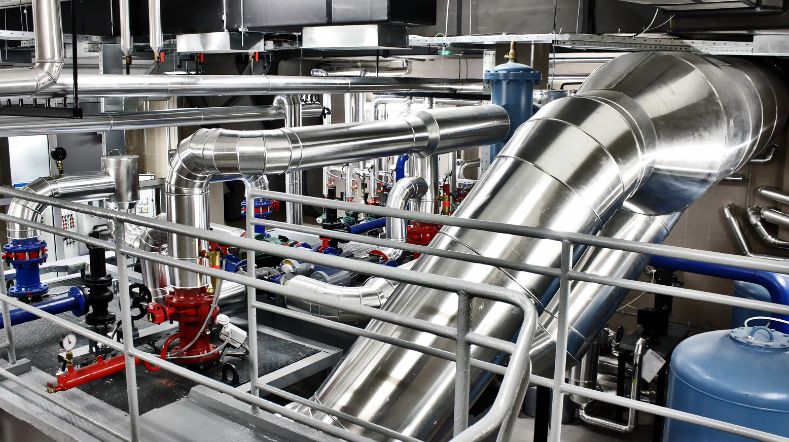
Innovations in energy storage
Energy storage can make an important contribution to counteracting energy loss during peaks of renewable energy. That's why we're putting a lot of effort into researching and developing different energy storage technologies. Find out what we’re doing.
The current possibilities for energy storage
With renewable energy generators, such as solar panels, solar collectors or wind turbines, it's difficult to match supply to the demand. For example, they generate a lot of energy at times when there is hardly any demand. Or they cannot deliver sufficiently at times of high energy demand. By storing energy, we're not dependent on supply and demand.
Energy storage in batteries
Battery solutions that allow home owners to store the power generated by their solar panels already exist. The Tesla Powerwall, for example, is a rechargeable 'house battery'. But today's batteries have a fairly low energy density. This makes it difficult to store large amounts of energy in a small space. They are also less suitable for bridging longer periods of time. In addition, they can store only electrical energy. This means that, for example, the excess heat from solar collectors is, unfortunately, wasted.
Energy storage in water
There are also boiler-type systems for storing heat. These work well to bridge for a short period of time. But they cannot store the power generated by solar panels during the summer for very long and then use it for heat during winter. By then, the water has already cooled considerably. Also, it's not exactly a compact solution. For storing large amounts, this type of storage requires a large water tank.
We have been working for some time on improving and developing this fairly traditional method of storage, and successfully. When storing heat in water, you have to expect heat loss. However, with the application of a new technology, it's possible to significantly reduce this heat loss. That's good news.
Compact energy storage
Compact energy storage is necessary for the energy transition in order to provide homes with climate-neutral heating on a large scale. Climate-neutral heating can be achieved only by using a renewable energy source. Furthermore, you also need to deal with seasonal influences on solar and wind energy. The compact design is important because it must be able to fit in today's homes. That's why we're working on new technologies capable of storing large amounts of energy in a compact heat battery for long periods of time. Compact batteries are loss-free during the storage period.
Share your energy
Now that there are increasing numbers of solar panels appearing on Dutch roofs, we're also generating more and more solar power. In our country, there is currently a netting scheme: if your solar panels produce excess electricity, then this excess can be can supplied back to your energy company. The energy company then subtracts these generated kWh from your consumption. Do your solar panels produce more than you use at any given time? If so, you'll receive a feed-in tariff. The amount paid varies from one energy supplier to another, but is usually lower than the kWh price you pay when you buy electricity.
Increasingly large peaks in the electricity grid
The netting scheme makes the use of solar panels economically very attractive. However, with so many people using it, grid operators are facing an increasing challenge in coping with the peaks in the electricity grid.
But also because more and more large wind farms are being built in the North Sea, which on windy days also generate huge amounts of electricity. Wind turbines and solar farms are now switched off during peaks. So this situation needs to be resolved quickly. After all, this sustainably generated energy plays a key role in the energy transition.
Local energy storage
It's now clear that without storage facilities we will always have a mismatch between energy supply and demand. That is why we must now really aim for energy storage. Local storage of heat is a priority in this respect. If you apply that to homes and buildings, it will result in a better balance between demand and locally produced energy. This will reduce the peaks that the electricity grid needs to deal with.
Thermochemical energy storage
With some salts, it is possible to create a chemical reaction when mixed with water that releases heat. This is by no means a new discovery. And that it's possible to reverse the process by adding heat to it has also long been known. The great thing about this is that there is no energy loss during the storage period. This means that thermal batteries based on this principle are well suited to bridging longer periods of time. The surplus solar energy produced during the summer can, for example, be used in the winter to heat the house. Also convenient: such a system using thermochemistry can be charged with both heat and electricity.
Advanced technology
Research into energy storage based on thermochemistry has been going on for decades. But it was always difficult to develop a device that was compact, robust and affordable. And that is also capable of being charged and discharged multiple times. But in the last 10 years, huge steps have been taken in this regard.
Both in Eindhoven (in cooperation with TU/e) and in Delft together with partners, we have developed technologies that bring a future with thermochemical energy storage much closer. There are still some areas on which we need to focus. However, both technologies are already at an advanced stage, and it seems that the first compact thermal batteries based on thermochemistry will be on the market within a few years. Probably in 2024, and perhaps even sooner.
'How successful this introduction will be depends to a large extent on the policy pursued by the government at the time. It's already known that the netting scheme for solar panels will not continue to exist in its current form. At the moment, it's not yet entirely clear what the new scheme will be, but it's clear that any compensation for feeding solar power back to the grid will be phased out by 2030. Those people who have already had solar panels installed or are considering buying them will be scratching their heads. And if at that time there are thermal batteries on the market which could solve that problem... Then, yes, that would be ideal, naturally.' Sten de Wit - TNO programme manager dealing with energy in the built environment.
Energy storage in metals
In terms of energy density and efficiency, energy storage in metals could also be interesting for use in the built environment. Metal oxidises when exposed to oxygen. This oxidation process can be reversed if hydrogen is added under certain conditions. That, in a nutshell, is the principle behind energy storage in metals. An example is the Redox-HEAT battery.
Energy storage in metals presents a challenge. This form of energy storage uses temperatures of roughly 400 to 1000 degrees Celsius. Due to these larger temperature ranges, the storage density can be considerably higher than in water up to 100 degrees.
This technology is currently still in the research phase. We have now mastered the process, but it remains to be seen whether this principle can actually be applied to a thermal battery. It's also not yet clear whether such a battery is best suited for use in the built environment or in an industrial application. This research is therefore still at a relatively early stage.
Smart energy networks
Smart grids are being developed in the Netherlands. These energy networks allow processes that are not time-critical to take place when there is a surplus of energy. For example, running a washing machine or charging an electric car while the sun is shining. This certainly helps to avoid peaks in the electricity network. And we're fully committed to contributing to the further improvement of these types of smart energy networks.
Get inspired
Technical catalogue based on Danish model to accelerate the roll-out of district heating networks


Making air healthier along busy roads


How existing homes are given energy label A++++




